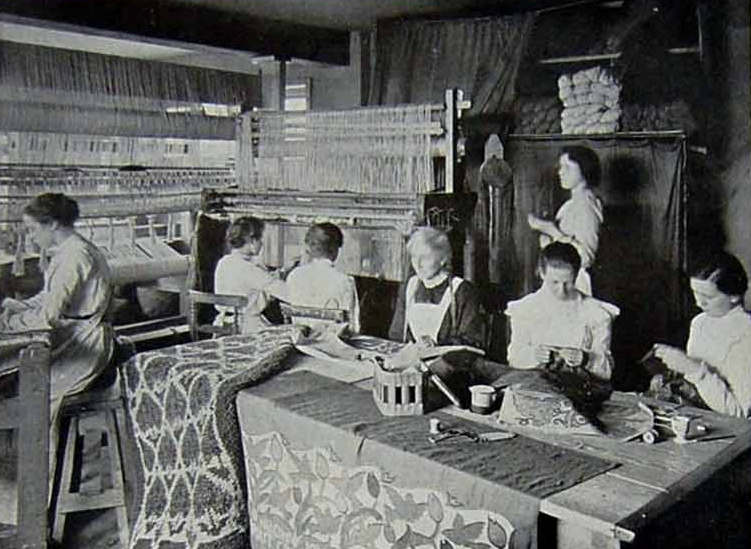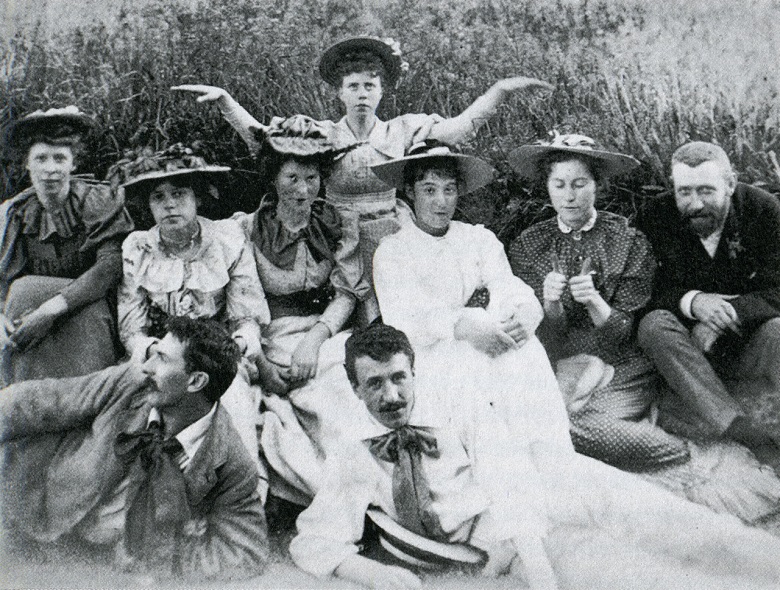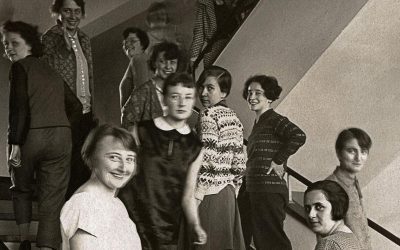In the vibrant world of arts and crafts, women artisans have long been the unsung heroes. Their contributions, often overlooked, have shaped the movement in profound ways. From textile designers crafting intricate patterns to ceramic artists moulding beauty from clay, women have left an indelible mark on this creative landscape. Yet, their stories remain hidden in the shadows. Why is that? The Arts and Crafts Movement was a time of innovation and creativity, but it was also a period when women’s roles were often minimised. Despite this, many women emerged as pioneers, breaking barriers and redefining what was possible in their crafts. Imagine the skill of embroidery innovators who transformed simple threads into works of art or stained glass makers who coloured our world with light. These women were not just artists; they were trailblazers. They carved out spaces for themselves in a male-dominated field and inspired future generations. As we delve into their stories, we uncover a rich tapestry of talent and determination. It’s time to shine a light on these remarkable women and celebrate their overlooked contributions to the Arts and Crafts Movement. Let’s embark on this journey to honour their legacy and inspire today’s artists.

Unveiling the Hidden Heroines of Arts and Crafts
The Arts and Crafts Movement of the 1880s to 1910s was full of talented women who never got the recognition they deserved. While men got most of the attention, women were quietly reshaping the art world through their incredible work. These women artisans created beautiful pieces in everything from jewellery to pottery, even though many art groups wouldn’t let them join. Some women, like May Morris, fought back by starting their own groups. May created the Women’s Guild of Arts in 1907, giving female artists a place to work together and get the respect they earned.
In America, women found more chances to make their mark in the movement. Places like the Paul Revere Pottery in Boston gave women the opportunity to earn money from their craft work. More girls were also allowed to attend art schools, opening new doors for female artists. While these changes were important steps forward, many people still saw women’s work as less valuable than men’s. They often treated women as just helpers who brought men’s ideas to life, rather than seeing them as creative artists in their own right. Despite these challenges, these hidden heroines left a lasting mark on the art world that we’re still discovering today.
The Rise of Women Artisans in the Movement
Women artists in the Arts and Crafts Movement found clever ways to build careers despite the limits placed on them. Since society already expected women to do creative work at home, many female artists used this to their advantage. They turned traditional skills like embroidery and pottery into respected art forms. As more art schools began accepting women students, these artists gained the training they needed to push their work further. Some, like Julia Morgan, even broke into male-dominated fields like architecture.
Female artists didn’t just work alone – they created strong networks to support each other. When the main art guilds wouldn’t accept them, women formed their own groups. These organisations helped women sell their work and gain recognition as professional artists. In America, workshops like Paul Revere Pottery paid women fair wages for their craft work, giving them financial independence. While women still faced unfair treatment and their work was often labelled as “just crafts” rather than fine art, they kept pushing forward. Their determination opened doors for future generations of women artists.
Textile Triumphs: From Embroidery to Tapestry
Women made their biggest mark in textile arts during the Arts and Crafts Movement. May Morris, the talented daughter of William Morris, led the way by becoming head of Morris & Co’s embroidery department at just 23 years old. She created her own style, using soft designs of English flowers that were different from her father’s bold patterns. Her work was so good that people still use her designs today, especially in wallpaper. Since embroidery was seen as proper work for women, many female artists used it to build successful careers while staying within society’s rules.
Tapestry making shows how complicated things were for women artists at this time. While men controlled most of the tapestry making, women played important roles behind the scenes. They could weave tapestries but weren’t allowed to do other parts of the work. Still, history shows us that women like Poinsette, a mediaeval seamstress, did crucial work preparing tapestries. Even the famous Bayeux Tapestry was probably made by English nuns, who may have added their own creative touches to the borders. Through textile work, women found ways to express their creativity and gain some independence, even though they didn’t always get credit for their achievements.
Breaking the Mould: Women in Ceramics and Pottery
Women pottery innovators changed the art world during the Arts and Crafts Movement by proving they could do more than just decorate ceramics. Places like Newcomb Pottery in New Orleans gave young women the chance to earn their own living through their craft. Here, they created beautiful pieces that showed off the local landscape in their designs. One standout artist, Adelaide Alsop Robineau, broke the usual rules by both making and decorating her own pots. She showed everyone that women could master every part of pottery making, not just the decorative work that society expected from them.
Even though many pottery workshops still divided the work by gender – with men making the pots and women decorating them – female artists kept pushing boundaries. Their unique styles brought fresh ideas to pottery making. These women mixed different cultural influences into their work, creating new and exciting designs. By proving they could succeed in this field, they opened doors for future generations of women artists. Their work did more than just challenge old ideas about what women could do – it helped many of them earn their own money and gain independence, which was rare for women at that time.
Crafting Beauty: Women in Jewelry and Metalwork
Women jewellery designers and metalwork craftswomen made their mark during the Arts and Crafts Movement, even though these fields were usually dominated by men. Pioneers like Charlotte Newman led the way – she ran her own successful jewellery shop on London’s fancy Savile Row. Ella Naper and Elinor Klapp also broke new ground, with Klapp becoming one of the biggest names at Chicago’s Arts and Crafts shows. These women brought fresh ideas to jewellery making, often using nature for inspiration and working with local materials to create unique pieces.At first, many women could only design jewellery while relying on men to work with the metal. But some, like Adelaide Alsop Robineau, mastered both parts of the craft. Their detailed work and bold designs caught people’s attention, and some even started their own successful businesses. Today, we’re finally giving these artists the recognition they deserve through special exhibitions that show how they changed art jewellery forever. Their courage to enter this male-dominated field helped pave the way for women artists who came after them.
Shining Through: The Stained Glass Ceiling Shattered
The story of women in stained glass shows how they broke through barriers in the art world. Mary Lowndes led the way in the 1890s, becoming one of the first professional women stained glass makers. She didn’t just make beautiful windows – she created opportunities for other women by starting her own studio, Lowndes and Drury, in 1897. Her studio, known as The Glass House, became an important place where independent artists could work on their pieces from start to finish. As a supporter of women’s rights, Lowndes helped other female artists find their place in this traditionally male craft.More women soon followed in her footsteps. Sarah Purser started An Tur Gloine (Tower of Glass) in Dublin, giving other artists a place to work and learn. Artists like the two Margaret Ropes made their mark too – one of them created more than 100 windows during her 50-year career. These women mastered every part of making stained glass, from cutting the glass to painting and firing it. Their success showed that women could do any kind of artistic work, no matter how challenging. Today, we can still see their beautiful windows in churches and buildings, reminding us of how they changed the art world forever.
Pages of Progress: Female Pioneers in Bookbinding and Printing
During the Arts and Crafts Movement, women made ground breaking strides in bookbinding and printing, reshaping industries long dominated by men. Elizabeth Friedlander, for instance, became a notable figure in bookbinding and typographic design, known for her elegant book covers and bindings. Many women of this period took apprenticeships or enrolled in specialised training programs, equipping them with skills that were rare for their time. In printing, pioneers like Anna Rügerin and Charlotte Guillard broke barriers. Rügerin, the first known female printer, ran her own press in 1484, while Guillard operated the famous Soleil d’Or printing house in Paris, managing multiple presses and dozens of employees. These women, along with others like Yolande Bonhomme, who published the Bible in 1526, showcased not only skill but resilience. They paved the way for economic independence, as seen in Lydia Bailey’s success in Philadelphia, where she managed over 160 male printers and even became the City Printer. These trailblazers laid the foundation for future generations of women in bookbinding and printing.
Weaving Change: Quilting, Lace-making, and Basketry Innovations
Women’s contributions to quilting, lace-making, and basketry during the Arts and Crafts Movement were essential in preserving and innovating these crafts. Quilting saw a creative revival, especially with the “Crazy Quilt” trend in the late 19th century, where women broke away from traditional patterns to explore artistic expression. Lace-making also flourished as women, supported by groups like the Lace and Embroidery Association, revived old techniques and taught new generations these valuable skills. Figures such as Margarita Naul combined traditional lace designs with natural and Celtic motifs, bringing a fresh twist to the craft. In basketry, organisations like the Deerfield Society expanded their efforts, providing women with economic opportunities while also incorporating Native American methods into their designs. Women like Mary Crease Sears became known for innovative designs that elevated basketry beyond functional use. These efforts not only preserved these crafts but also provided women with creative and economic independence, enriching the movement’s legacy.
The Lasting Legacy: How Women Shaped Decorative Arts
Women played a vital role in shaping decorative arts during the Arts and Crafts Movement, pushing boundaries and gaining recognition. This movement encouraged women to participate in areas like textiles, ceramics, and stained glass, expanding beyond traditional domestic roles. For example, May Morris developed her own unique embroidery styles, while Mary Lowndes became a pioneer in stained glass, breaking stereotypes in this field. The movement also gave women access to art education, opening doors at institutions like the Glasgow School of Art, where Ann Macbeth emerged as a leading educator. Women not only excelled artistically but also organised and led crucial groups, like the Women’s Guild of Arts, founded by May Morris in 1907. These groups provided platforms for collaboration and professional growth, challenging factory production with a return to handcraft traditions. Women like Adelaide Alsop Robineau mastered both design and execution, proving their skills in fields like ceramics and architecture, traditionally reserved for men. Their legacy set the stage for future generations, showing that women’s contributions in decorative arts are essential and enduring.
Celebrating the Unsung Artisans of Yesterday and Today
The contributions of artisans, especially women, during the Arts and Crafts Movement often went unnoticed, despite their skill and dedication. Women engaged in crafts like textiles, embroidery, pottery, and jewellery design, which were often viewed as mere extensions of their domestic duties. Yet, these artisans demonstrated immense creativity and technical ability. Organisations like the Women’s Guild of Arts, founded by May Morris in 1907, offered these women a platform to collaborate, gain professional status, and be recognized as true artists. Despite these efforts, many of their names and works were overshadowed or forgotten. In recent decades, art historians have worked to rediscover these figures, uncovering the stories of women like Annie Garnett, founder of The Spinnery workshop, whose textile designs made a lasting impact. This renewed focus also highlights the craftsmanship of lesser-known art forms, such as the work of celators—engravers who designed ancient coins—showing the wide range of skills women contributed throughout history.
Today, there’s a revival of interest in handcrafted art and traditional techniques, allowing modern artisans to draw inspiration from the past while making their mark in contemporary settings. Exhibitions, books, and academic studies are increasingly spotlighting these historical figures and celebrating contemporary artisans who carry on these traditions. However, the struggle for recognition and fair compensation remains a challenge, much like it was for the artisans of the past. Online platforms now provide a global stage for these craftspeople, giving them direct access to consumers and helping them sustain their work. By honouring both past and present artisans, we recognize their valuable role in shaping culture and inspire new generations to continue their legacy.
Conclusion: Honouring the Legacy of Women Artisans
The Arts and Crafts Movement showcases how women, despite being overlooked, made crucial contributions that continue to inspire today’s artists and craftspeople. By recognizing their work and learning about their stories, we honour their legacy and ensure their talents are not forgotten. Whether you are an artist, a historian, or a craft enthusiast, there’s so much to learn from these women who broke barriers and set the foundation for future generations. Let their stories motivate you to explore and appreciate the art and crafts that shape our cultural heritage.
FAQs
1. What was the Arts and Crafts Movement?
The Arts and Crafts Movement was an artistic movement during the late 19th and early 20th centuries focused on handmade crafts, natural materials, and traditional skills.
2. Why were women’s contributions often overlooked during this period?
At the time, society largely saw crafts like embroidery and pottery as domestic tasks rather than valuable artistic work. Women’s roles were minimised, and their work was often undervalued compared to men’s.
3. Who were some key female figures in the Arts and Crafts Movement?
Women like May Morris, Adelaide Alsop Robineau, and Mary Lowndes were pioneers. They led organisations, created innovative designs, and made significant contributions in fields such as embroidery, pottery, and stained glass.
4. What impact did May Morris have on the movement?
May Morris led the embroidery department at Morris & Co. and founded the Women’s Guild of Arts. She created new styles in textile art, paving the way for female artisans.
5. How did women artisans gain recognition despite challenges?
Many women formed their own groups, like the Women’s Guild of Arts, and participated in workshops that paid fair wages. They also took advantage of new art schools accepting female students to develop their skills.
6. What role did women play in pottery during the movement?
Women like those at Newcomb Pottery in New Orleans created beautiful pieces that depicted local landscapes. Some, like Adelaide Alsop Robineau, broke traditional gender roles by mastering both the making and decorating of pottery.
7. Why was embroidery important for women during this time?
Embroidery was seen as a suitable and respectable art for women. Many female artists used it to build successful careers, creating intricate and influential designs that are still admired today.
8. Did women participate in other crafts besides textiles and pottery?
Yes, women were also involved in stained glass, jewellery design, lace-making, and basketry. They adapted traditional skills and created new, innovative designs that shaped these crafts.
9. How are these women’s contributions being recognized today?
Art historians and exhibitions now highlight their work, bringing attention to the skills and talents that were overlooked. Contemporary artisans also draw inspiration from these early female pioneers.
10. How can I learn more about women artisans in the Arts and Crafts Movement?
You can reach out to me via email at info@semrajelil.com for further information or to discuss this topic. I’m happy to provide additional resources and insights.





0 Comments